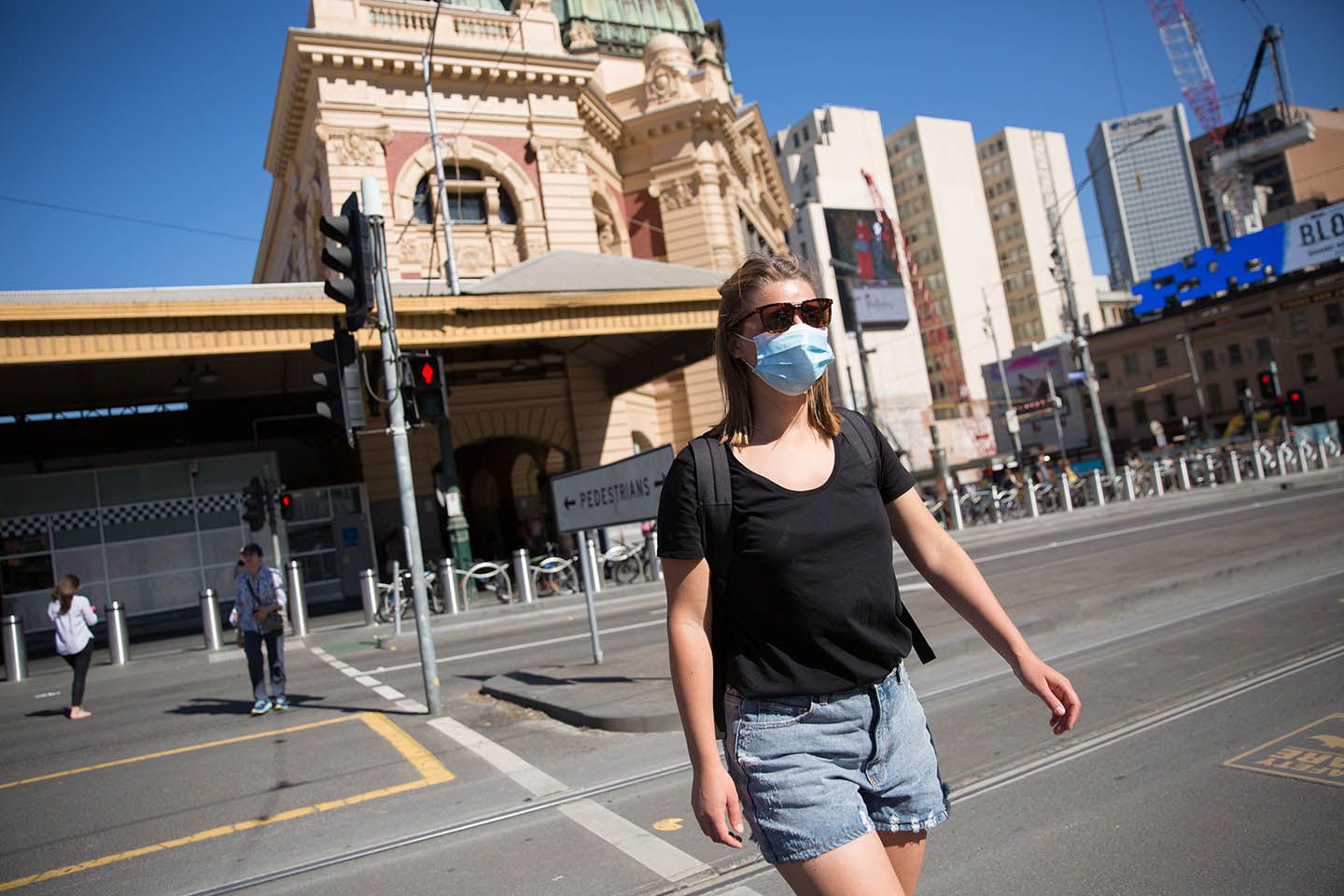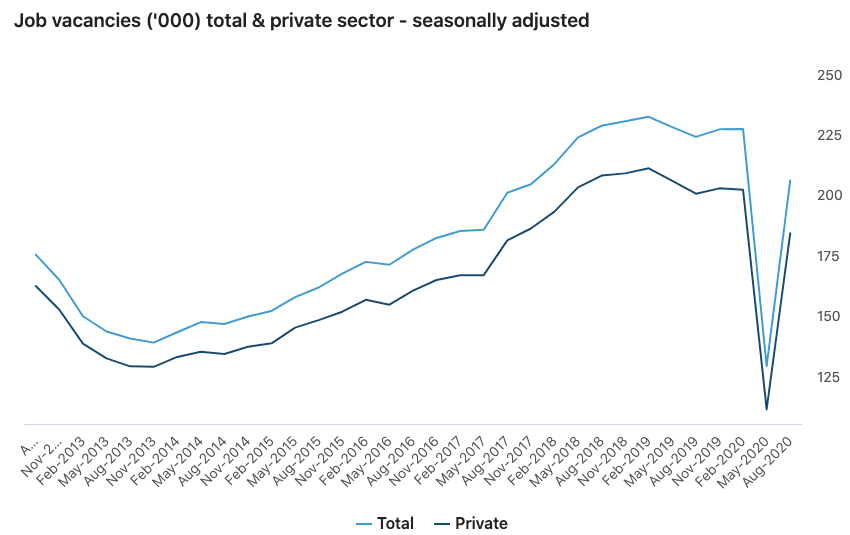Pound-Australian Dollar Rebound Fades, Aussie Bid on Job Vacancies Data and Improved Global Sentiment
- GBP/AUD rally tops out
- Improving investor sentiment aids AUD
- Aus job vacancies data suggests labour market improving
- Credit data remains subdued

- GBP/AUD spot rate at time of publication: 1.7992
- Bank transfer rates (indicative guide): 1.7362-1.7488
- Transfer specialist rates (indicative guide): 1.7573-1.7830
- More information on specialist rates here
The British Pound's recovery against the Australian Dollar faded amidst a broad recovery in global investor sentiment and data from Australia showing the employment market improved markedly in August.
The Australian Dollar advanced against the Pound, Dollar, Euro and other developed economy currencies amidst an environment of improving global investor sentiment, a key ingredient to Australian Dollar outperformance.
Markets cheered news out of the U.S. that suggested that Democrats and Republicans were inching towards sealing a stimulus deal ahead of the November Presidential election, a development that would provide some insurance against the market uncertainty the highly-anticipated vote is delivering.
Treasury Secretary Steve Mnuchin told CNBC he’s hopeful an eagerly and long-awaited bipartisan deal on a pre-election stimulus package will be struck, before noting that an anticipated proposal from President Donald Trump’s White House will be similar to that put forward by the House of Representatives’ ‘Problem Solver’ caucus.
The caucus had proposed a $1.5 trillion programme that would put new money into the hands of households and furloughed or redundant workers, with an ‘escalator clause’ that could increase the size of the package in the event that a renewed pickup in the number of coronavirus infections causes fresh disruption.
"I think there is a reasonable compromise here," Mnuchin told a conference hosted by CNBC and Institutional Investor, as other media reported increased optimism about the prospects of a deal back in Washington, raising hope that months long deadlock could be broken before the week is out.
The Pound-to-Australian Dollar exchange rate has eased back in an environment of Aussie Dollar outperformance, with the pair quoted at 1.8012 on October 01, having been as high as 1.8284 on September 28. The Australian-U.S. Dollar exchange rate is 0.33% higher on the day at 0.7187 following three successive days of gains. The Euro-to-Australian Dollar exchange rate is at 1.6343, having been as high as 1.6592 on September 24.
Aiding Aussie Dollar gains was news domestic job vacancies gained 59.4% quarter-on-quarter in August, meaning 78% of the previous quarter’s job vacancy losses have recovered.
According to the ABS, vacancies rose across all states and territories, with New South Wales recording a 56% rise, Victoria 59.5%, Queensland 67.0%, South Australia 83.2%, Western Australia 91.4% and the Northern Territory recording a 147% increase.
In the Northern Territory, Western Australia, Queensland and South Australia vacancies were reportedly higher than before the covid-19 pandemic.
But Victoria and New South Wales vacancies remain more than a fifth lower than February levels.
The improvement in job vacancies data is a precursor to an improvement in labour market dynamics, and will signal to markets that the Reserve Bank of Australia (RBA) can afford to wait before potentially cutting interest rates again.
Expectations for a 'mini' rate cut at the RBA grew through September, a month in which the Australian Dollar broadly underperformed.
Should Australian data improve, expectations for more RBA intervention would likely fade, offering support to the currency.
"AUD upside is being capped by the expectations for a RBA interest rate cut next week or in November. Our house view is that the RBA will leave monetary policy on hold at its meeting next week. AUD can lift further if the RBA does not deliver a cut," says Carol Kong, a foreign exchange strategist at Commonwealth Bank of Australia.
While vacancies are improving, sentiment on the Australian economy was tempered by separate data that showed credit to the private sector is contracting, falling for a fourth consecutive month in August.
"In 2020, the economic recession triggered by the global pandemic and the restrictions on travel and social distancing have seen a marked reduction in the appetite for borrowing - across businesses and households," says Andrew Hanlan, Economist at Westpac.
For the four months May to August, credit fell of -0.13%, -0.19%, -0.14% and -0.03%. Annual credit growth has moderated to 2.2%.
The cumulative 0.5% decline in credit over the past four months includes a 2.3% reduction in business credit, a 4.8% drop in personal credit and an anaemic 0.9% rise in housing. Over the period, household credit all but stalled, up only 0.1%.
"These results are the weakest for private sector credit since the GFC. In that cycle, annual growth slowed to a low of 0.8% in November 2009, including a -7.5% decline for business. The low in the early 1990s recession period was -1.8% in April 1992," says Hanlan.
Housing credit data meanwhile showed weakness with a monthly increase of just 0.02% in August for the investor segment, giving a year-on-year change for August at -0.6%. Owner-occupier credit grew by 0.38% month-on-month, taking the year-on-year increase to 5.4%.
"The reopening of the economy will be supportive for the housing market - but there will be some lasting impacts from the covid recession, notably higher unemployment, reduced confidence and near-term weakness in population growth with the international border closed," says Hanlan.
While jobs vacancies offer some optimism, the RBA might be inclined to look at weakness in credit markets when deciding on whether to cut interest rates or stand pat.





